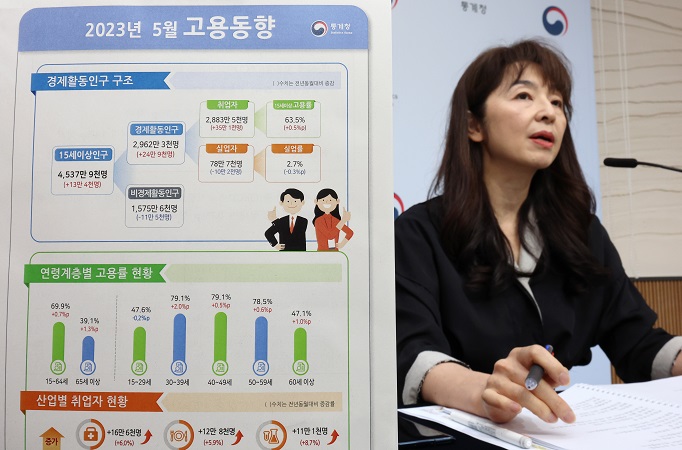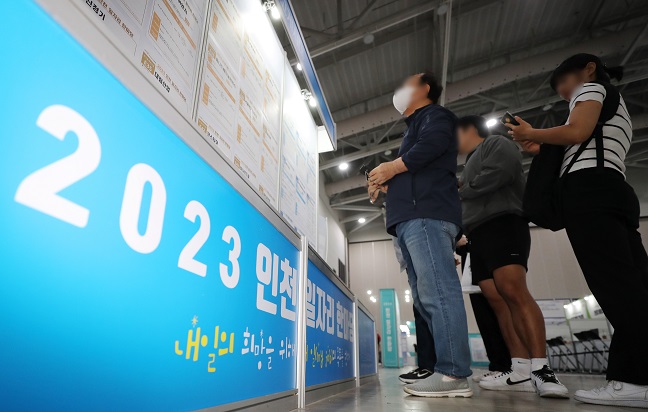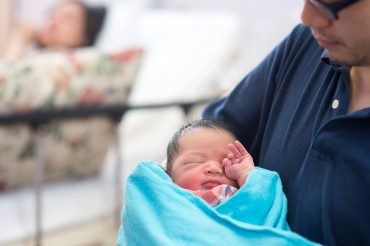
An official from Statistics Korea holds a briefing on South Korea’s monthly job report in the central city of Sejong on June 14, 2023. (Yonhap)
SEOUL, June 14 (Korea Bizwire) — South Korea’s job additions slowed for the second consecutive month in May following a brief rebound in March amid lingering economic uncertainties, data showed Wednesday, although the employment rate nevertheless reached a fresh high.
The number of employed people came to 28.83 million in May, up around 351,000 from a year earlier, according to the data compiled by Statistics Korea.
South Korea’s on-year job additions had been slowing for nine consecutive months through February, before rebounding in March, when they rose 469,000 on-year. In April, the country added 354,000 jobs.
Last month, the country’s jobless rate fell 0.3 percentage point on-year to 2.7 percent.
The overall increase was mostly led by those aged 60 and above, with the number of jobs for the group rising 379,000 over the period.
The number of jobs for those in their 30s and 50s advanced 70,000 and 49,000, respectively, the data showed.
The job market remained, however, challenging for younger South Koreans, as the number of positions for the 20-something group declined by 63,000, and those for 40-somethings slipped 48,000.
By sector, the number of jobs in the construction and manufacturing segments plunged 66,000 and 39,000, respectively, on-year in May, reflecting the economic uncertainties and weak exports.
The number of jobs in the manufacturing sector fell on-year for the fifth consecutive month in May, although it slowed from a 97,000 drop tallied in April.
South Korea’s exports fell for the eighth consecutive month in May, decreasing 15.2 percent on-year.
The decline came as exports of semiconductors, the country’s key export item, sank 36.2 percent on falling demand and a drop in chip prices.
Jobs in the wholesale and retail sector went down 31,000.
The number of new positions in the health care and welfare sector, on the other hand, rose 166,000, and those in the accommodation and restaurant industry gained 128,000 as the country returned to pre-pandemic normalcy.

Visitors look at job openings at a career fair in Incheon, 27 kilometers west of Seoul, in this May 23, 2023, file photo. (Yonhap)
Meanwhile, the employment-to-population ratio of South Koreans aged 15 and above reached 63.5 percent in the month, up 0.5 percentage point on-year, marking the highest level for any May since the agency began compiling related data in 1982.
The ratio for those aged 15-64 edged up 0.7 percentage point to 69.9, the highest for the month since the data was released in 1989.
“The rising demand for caretaking services, along with the recovery of outdoor activities, has led to an increase in the number of employed people,” an official from the agency said.
“The manufacturing sector was affected by falling exports of chips and petrochemical products,” the official added, noting the growth in the number of jobs in the automobile sector limited the slowdown.
In May, the Bank of Korea held the benchmark interest rate steady for the third straight time at 3.5 percent on easing inflationary pressure amid rising concerns over an economic slowdown.
The central bank had delivered seven consecutive hikes in borrowing costs from April 2022 to January 2023. A hike in borrowing costs typically hampers employment as businesses and households cut their spending.
For the remainder of 2023, the finance ministry said sluggish exports are expected to delay the recovery of the manufacturing sector, leading to a continued slowdown in the country’s job additions.
In 2022, South Korea added an average of 816,000 jobs on-year each month, driven by the post-pandemic recovery.
(Yonhap)






